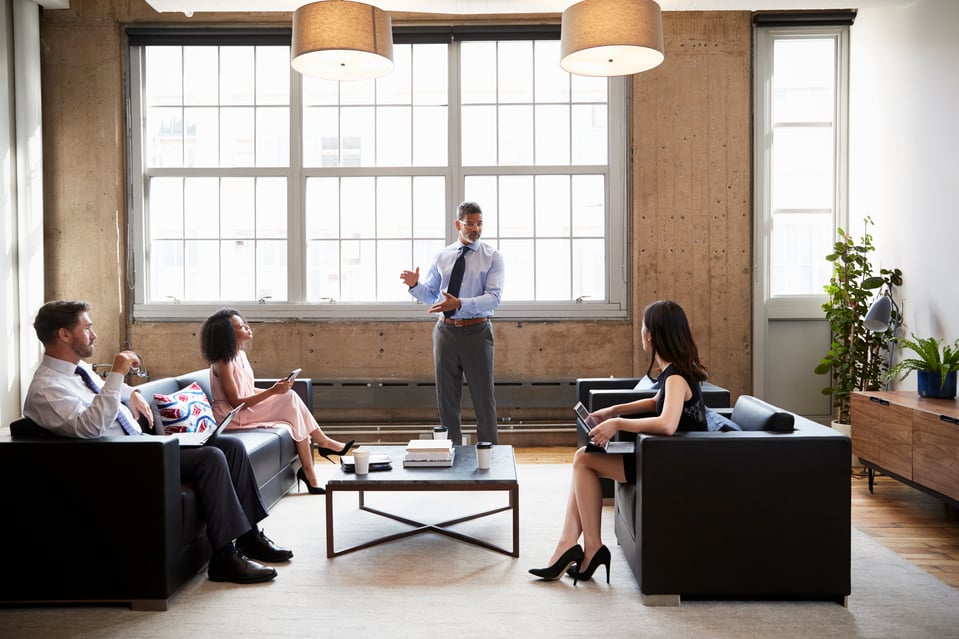>
Title Our Blog
What is Dynamic Office Design?
Karl Elhen
Aug 9, 2022 11:00:00 AM

Now more than ever, organizations need to be proactive about creating comfortable workspaces that are inviting to employees and conducive to productivity. This is where dynamic office design can have a powerful impact, making the space more engaging and adaptable.
What exactly is dynamic office design, and what role does it play in the modern office? In this post, we break down the key design elements found in these spaces and how they help to support today’s workforces.
What is dynamic office design?
Dynamic office design is a design concept that is focused on making workspaces more flexible and fluid. It incorporates the use of different areas for productivity and collaboration, while also having the flexibility to make changes over time.
The key difference between traditional office design and dynamic office design is that the former is static. Conventional offices are exemplified by their one-desk-fits-all mentality. (Think enclosed cubicles that keep workers separated from each other all day.) Dynamic offices make the space more open and functional, helping teams to stay connected and adapt to the evolving demands of the workday.
Examples of dynamic office design
What does dynamic office design look like? While each office should be designed to fit the unique needs of the organization, there are a few fundamental design elements and architectural approaches that you’ll usually find in these spaces. Here are a few examples:
1) Open floor plans
Open-plan offices serve an important purpose of making it easier for employees to move around, interact and collaborate. They break down the barriers that prevent workers from connecting with each other and reaching their full potential.
Office floor plans don’t have to be noisy seas of desks. With the incorporation of glass architectural walls and other low-profile partitions, you can give employees the individual spaces they need to thrive, while still fostering collaboration. Glass walls help to make the space feel more open, while also allowing more natural light throughout the office.
2) Diverse meeting spaces
Remember, dynamic office design isn’t just about desks. The key to these spaces is having a wider variety of areas for teams to meet, share ideas and get things done. This means creating different types of meeting spaces to fit the dynamic needs of your employees.
Think beyond the traditional boardroom. Smaller conference rooms and huddle rooms are great for informal meetings among a handful of employees. Open lounge areas with comfortable furniture (i.e. sofas and coffee tables) make the space even more comfortable while still encouraging collaboration. Individual “hot desks” are also ideal for remote employees who only occasionally visit the office or for workers who prefer not to be tethered to a single fixed workstation.
3) Demountable partitions & modular furniture
Fast-moving organizations need fast-moving workspaces. That means being able to adapt as needs evolve over time. Demountable office partitions are one way to achieve this. They give you the flexibility to design your space into a dynamic work environment without the cost or time constraints of traditional construction. The addition of modular panels also makes it easy to incorporate different materials and finishes (i.e. glass, wood, etc.) for a more dynamic look.
Furthermore, the incorporation of modular office furniture gives you the freedom to change things up, so that the space never feels too static.
Need some dynamic office design ideas?
Contact us today to learn more about creating a dynamic office with glass architectural walls and other flexible workspace solutions from Rampart.
